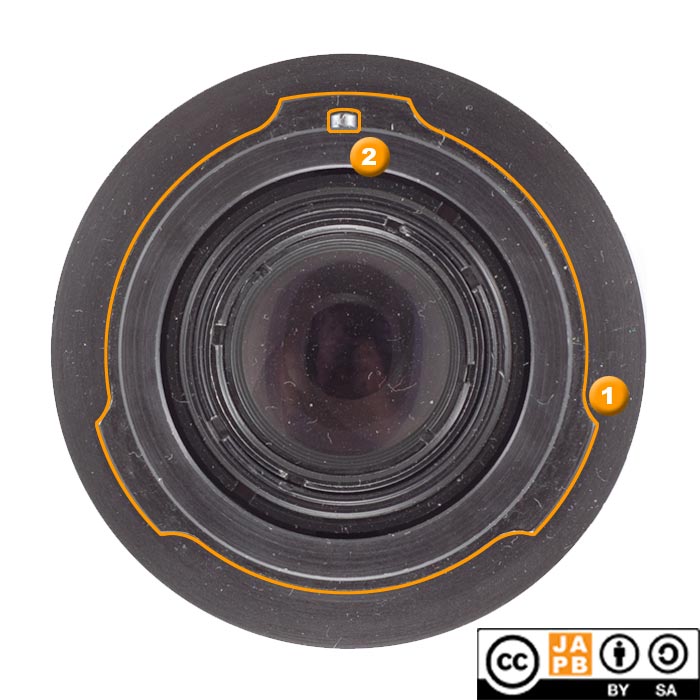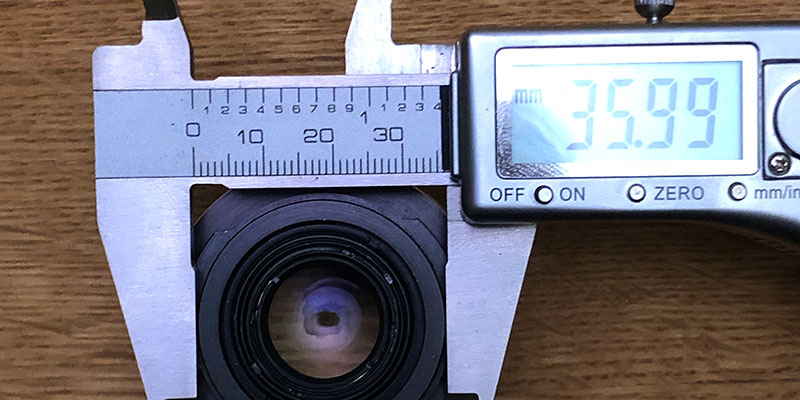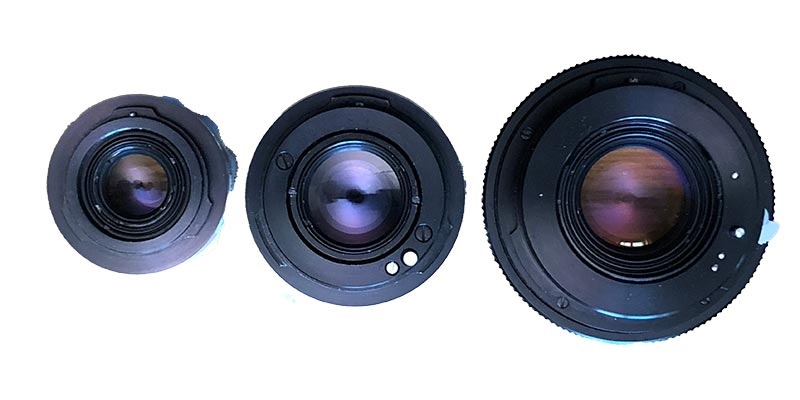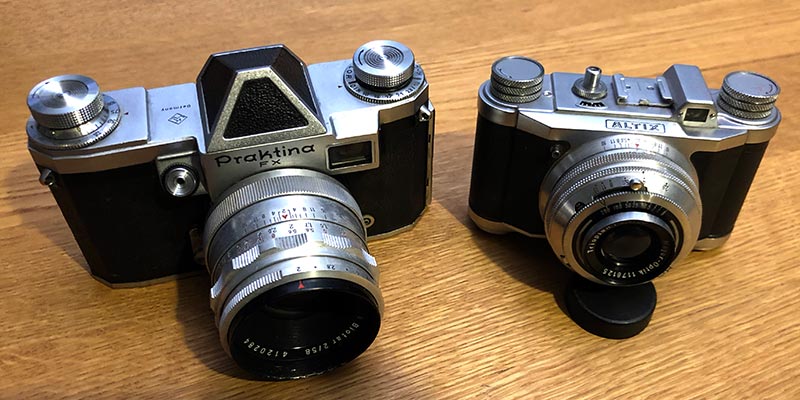Pekka Buttler (Updated 5/2025)
This article introduces the Altix mount, a mount used by late 1950s East German Altix viewfinder cameras.
Altix mount specifications and identification
Mount type: Breech-lock (ring on camera)
Flange focal distance: 42,5 mm
Film format: 36mm x 24mm (‘Full frame’)
Mount communication: none

Key characteristics of the mount of Altix lenses:
[1] Three-pronged mount.
[2] Orientation pin at 12:00.

Basic Information on the Altix mount:
The original Altix viewfinder camera, introduced by Eho-Altissa in 1938, was one of those many German 1930s innovations that would have attempted to take the world by storm, had not the German dictator had competing plans on other ways of trying to take over the world. Instead, WWII led to an almost decade-long break in the development of the Altix cameras, and the Altix was relaunched in 1947.
Originally intended to take square format (24×24) pictures on 35 mm film, the Altix was later (1949) upgraded to 36×24 format, and was – with the introduction of the Altix V in 1956 – upgraded to allow for interchangeable lenses.
The shortish flange focal distance of Altix mount lenses also means that would one aim to produce an adapter for dSLRs, that adapter would either sacrifice infinity focus (and then some) or necessitate corrective optics.
The Altix V (and the subsequent models) used their own lens mount, commonly referred to as the Altix mount. While the Altix mount is not compatible with any other lens mount, it is quite easy to see that it has some common dna with several other East German lens mounts – most prominently, the Praktina and Praktisix (alias Pentacon Six) mounts.

Besides the obvious difference in size, the similarity is really striking:
1) All are Breech-lock mounts with the locking ring on the camera;
2) All have three lugs
3) All have an orientation pin at 12:00
While the Altix line of cameras was highly popular, and even found purchase among ambitious aficionados (an Altix and its lenses offered a very compact alternative to schlepping an SLR&lenses), it was discontinued early in the 1960s. Common wisdom has it that by then the Altix had reached the peak of what a small manufacturer could conceivably achieve within the framework of a compact viewfinder camera and that the newly merged company (the manufacturer had been merged into VEB Pentacon) wanted to put all its efforts in the strongly growing SLR market.

Right: Altix IV (Introduced 1952) with normal lens
(Full disclosure: Altix V and subsequent models – while not any broader or higher – were a bit less compact due to the less compact lens–shutter assembly)
Adapting Altix lenses
Note: While I’ve done my research, I’m not pontificating from a position of strength here. With (currently) some 300+ lenses in my inventory, and even though I have a … (Francophiles might call it a ‘penchant’, Germaniacs a ‘Vorliebe’) for German lenses, I do in fact not have a Altix mount adapter in my possession. Read on, to find out why…
First, why would you want to adapt Altix lenses? Notwithstanding the situation wherein you’re already in possession of a wide spectrum of quality Altix lenses, well… A majority of those lenses that were available for the Altix mount were also available for Exakta and M42 mounts. So, in a way, there are few ‘unicorns’ that would make investing in the Altix mount (and adapters) especially attractive. On the other hand, one might well encounter the situation where a particular late-50’s lens could be most affordable in Altix mount…
Problematically, Altix mount adapters are not exactly 13 a dozen. In fact, they’re outright rare. I’ve (as of mid 2025) found a couple of minor/cottage industry manufacturers that offer Altix-to-mirrorless1 adapters. And while some of the craftsman-made adapters I’ve purchased work as advertised, others have been tolerable only for the true enthusiast.
This is somewhat unusual, as there are no real reasons why Altix mount lenses could not easily and fluently be adapted to mirrorless full-frame cameras (assuming that you have an adapter).
Read more:
• Pages on the Altix viewfinders on camera-wiki
• The Altissa-Museum.de on the wayback machine
- One rather popular approach seems to be adapting Altix lenses to Leica thread mount and Leica M mount, and this seems to be the most easily procured type of adapter. These adapters could then be combined with your existing LTM/Leica M adapter to reach other mirrorless mounts. ↩︎